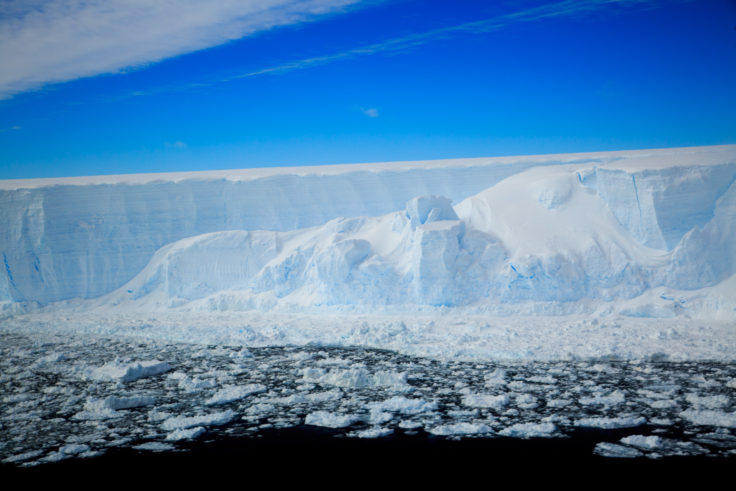Scientists have used geological records to create a much clearer picture of the pattern and extent of ice shelf break-ups in Antarctica.
In a study called the History of Larsen C Ice Shelf reconstructed from sub-ice shelf and offshore sediments, led by the British Antarctic Survey, scientists reconstructed the history of Larsen C Ice Shelf in Antarctica to enable them to better understand if and when it might collapse in the future.
Larsen C is the largest remaining remnant of a much more extensive area of ice on the Antarctic Peninsula that began to break up during the 1990s (Larsen A), and saw a huge collapse in 2002 (Larsen B).
Using hot water drilling technology to penetrate the 300m-thick ice shelf, scientists collected seabed sediment cores from beneath the Larsen C Ice Shelf in 2011. Data from these were combined with data from sediment cores recovered offshore a decade earlier, enabling the science team to reconstruct the first detailed history of the ice shelf.
The authors concluded that despite modest retreat and advances of the ice shelf front there was no significant collapse during the past 10,000 years.
Lead author, marine geologist Dr James Smith from British Antarctic Survey, said, “There is a huge international scientific effort underway to get a better understanding of what’s happening to Antarctica’s ice shelves. If we can understand what happened in the past we will have a sense of what might happen in the future. We can perhaps differentiate natural events that affect the ice shelves from environmental change related to human activity. This new study provides the final piece of the puzzle to the history of this largest remaining ice shelf on the eastern Peninsula.”
The team suggest that persistence of Larsen C, as well as Larsen B, implies that these ice shelves were more resilient to past climate warming because they were thicker, or that the heat from the atmosphere and ocean did not penetrate this far south.
In this context, the collapse of Larsen B in 2002 provided the first clue that the extent of contemporary ice shelf break-ups was starting to push further south than at any time during the past 10,000 years. Larsen C is also showing signs that it might be the next ice shelf in line to collapse.
“We now have a much clearer picture of the pattern and extent of ice shelf break-ups, both past and present. It starts in the north and progresses southward as the atmosphere and ocean warms. Should collapse of Larsen C happen, it would confirm that the magnitudes of ice loss along the eastern Antarctic Peninsula and underlying climate change are unprecedented during the past 10,000 years,” added Smith.



